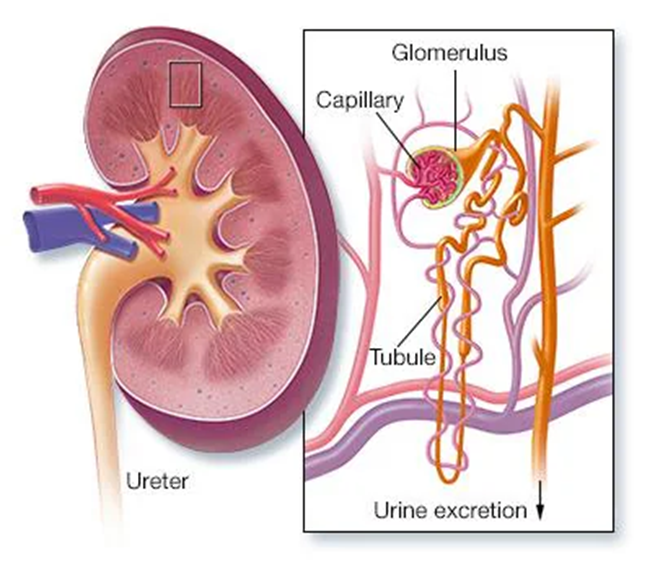Which of the following should the nurse include when teaching a parent about the administration of ferrous sulfate to a 4-year-old child? (Select all that apply)
Use a straw to administer the medication.
Give the medication with vitamin C.
It is best to give the medication with food.
Give the medication with milk.
Correct Answer : A,B,C
The correct answers are a) Use a straw to administer the medication, b) Give the medication with vitamin C, and c) It is best to give the medication with food.
Choice A reason:
Using a straw to administer ferrous sulfate is recommended to prevent staining of the teeth. Ferrous sulfate, especially in liquid form, can cause discoloration of the teeth if it comes into direct contact with them. By using a straw, the medication bypasses the teeth, reducing the risk of staining.
Choice B reason:
Giving ferrous sulfate with vitamin C is beneficial because vitamin C enhances the absorption of iron. Vitamin C (ascorbic acid) helps convert iron into a form that is more easily absorbed by the body. Therefore, administering ferrous sulfate with a source of vitamin C, such as orange juice, can improve its effectiveness.
Choice C reason:
It is best to give ferrous sulfate with food to reduce gastrointestinal side effects. While iron is best absorbed on an empty stomach, it can cause stomach upset, nausea, and constipation. Taking the medication with food can help mitigate these side effects, making it more tolerable for the child.
Choice D reason:
Giving ferrous sulfate with milk is not recommended. Dairy products, including milk, can interfere with the absorption of iron. Calcium in milk binds with iron, reducing its bioavailability and effectiveness. Therefore, it is best to avoid giving ferrous sulfate with milk or other dairy products.
Nursing Test Bank
Naxlex Comprehensive Predictor Exams
Related Questions
Correct Answer is ["A","D"]
Explanation
Choice A reason:
Facial edema is a common clinical manifestation of nephrotic syndrome in children. This occurs due to the retention of fluid in the tissues, which is a result of the kidneys leaking protein into the urine (proteinuria). The loss of protein reduces the oncotic pressure in the blood vessels, leading to fluid accumulation in the interstitial spaces, particularly noticeable around the eyes and face.

Choice B Reason:
Cloudy smoky brown-colored urine is not typically associated with nephrotic syndrome. This symptom is more indicative of hematuria, which is the presence of blood in the urine. Hematuria is more commonly seen in conditions such as glomerulonephritis rather than nephrotic syndrome.
Choice C Reason:
Weight loss is not a characteristic symptom of nephrotic syndrome. In fact, children with nephrotic syndrome often experience weight gain due to fluid retention. The accumulation of fluid in the body can lead to an increase in weight, rather than a loss.
Choice D Reason:
Frothy appearing urine is a hallmark sign of nephrotic syndrome. The frothiness is due to the high levels of protein being excreted in the urine (proteinuria). When protein is present in the urine, it can cause the urine to appear foamy or frothy.
Correct Answer is D
Explanation
Choice A reason:
A 7-year-old child with diabetes insipidus and a urine specific gravity of 1.016 is not in immediate danger. Diabetes insipidus is a condition characterized by excessive thirst and excretion of large amounts of severely diluted urine. A urine specific gravity of 1.016 is within the normal range (1.005 to 1.030). Therefore, this child does not require immediate assessment.
Choice B reason:
A 4-year-old child with asthma and a PCO2 of 37 mm Hg is also not in immediate danger. Asthma is a chronic condition that can cause difficulty breathing, but a PCO2 level of 37 mm Hg is within the normal range (35-45 mm Hg). This indicates that the child’s respiratory status is currently stable, and immediate assessment is not required.
Choice C reason:
A 1-year-old toddler with roseola and a temperature of 39°C (102.2°F) is experiencing a common viral infection that typically causes a high fever followed by a rash. While the fever is high, it is not uncommon for roseola and can be managed with antipyretics and supportive care. This child does not require immediate assessment.
Choice D reason:
A 10-year-old child with sickle cell anemia reporting 8 out of 10 chest pain is in immediate danger and requires urgent assessment. Chest pain in a child with sickle cell anemia can indicate acute chest syndrome, a severe and potentially life-threatening complication. Acute chest syndrome is characterized by chest pain, fever, and respiratory distress, and it requires prompt medical intervention. Therefore, this child should be assessed first.
Whether you are a student looking to ace your exams or a practicing nurse seeking to enhance your expertise , our nursing education contents will empower you with the confidence and competence to make a difference in the lives of patients and become a respected leader in the healthcare field.
Visit Naxlex, invest in your future and unlock endless possibilities with our unparalleled nursing education contents today
Report Wrong Answer on the Current Question
Do you disagree with the answer? If yes, what is your expected answer? Explain.
Kindly be descriptive with the issue you are facing.
